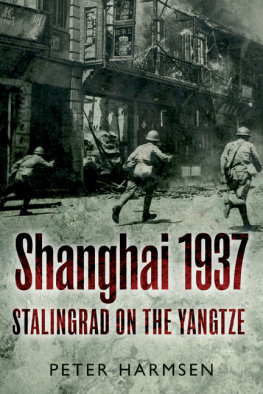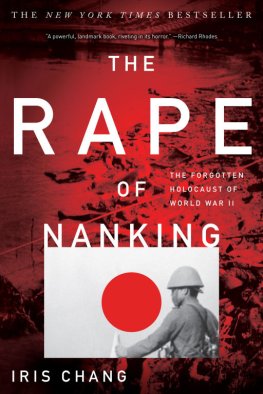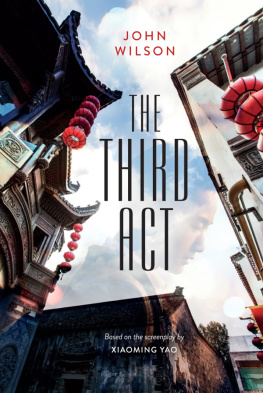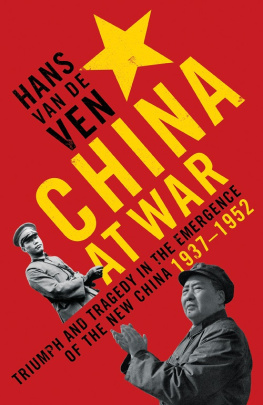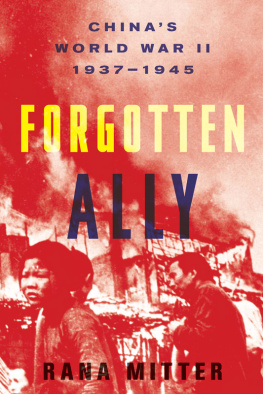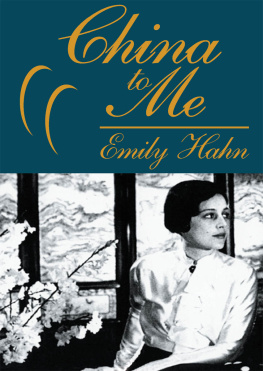Nanjing 1937
Battle for a Doomed City
Peter Harmsen

Contents
Maps
Authors Note
THE PROS AND CONS OF THE PINYIN SYSTEM OF TRANSLITERATION have been hotly debated. However, the fact is that in the early 21st century it is far more commonly used than any competing system and, therefore, it has been adopted in this book, with only a few exceptions where other more traditional spellings are used universally. For example, Chinas ruler at the time is referred to as Chiang Kai-shek, not Jiang Jieshi, and Chinas longest river is the Yangtze, not the Changjiang. I have also opted to refer to the Chinese capital by its pinyin spelling, Nanjing. In a few instances, especially in direct quotes, the spelling more common at the time, Nanking, has been preserved.
More generally, geographical names are given in their modern form rather than in the form common in 1937, so they are more recognizable to the reader (e.g. Beijing instead of Beiping and Taiwan instead of Formosa). In a few cases, I have decided to provide direct translations of Chinese place names, for example, Purple Mountain instead of Zijinshan or Gate of Enlightenment instead of Guanghua Gate. The main purpose is to make the text easier for the non-Chinese speaker to follow.
It is the custom in China to place the family name (usually one syllable) first, followed by the given name (usually two syllables). This custom has been followed in this book. For Japanese names, I also follow the Japanese practice of putting family names first. Despite advice from Japanese linguists, I have refrained from using diacritic marks to indicate the length of vowels. This is because I wish to make the text easier on the eye.
This book is the result of lengthy research using a large number of mainly first-hand sources. The narrative has been constructed using this source material and is the result of a long series of individual choices. Each of these choices could have turned out differently had another writer been at work, and the end result would have been a very different book. I welcome discussion of the choices I have made. The easiest way is to visit my website www.chinaww2.com or my Facebook page, www.facebook.com/chinaww2. Only through a frank and open debate will we be able to gradually approach that elusive and essentially unachievable objectto recount history as it really was.


Prologue
DURING THE COURSE OF SIX TERRIBLE WEEKS IN LATE 1937 AND early 1938, Nanjing was transformed from a name into a symbol. Nanjing, or Nanking as it was known in the West at the time, became the victim of the intense and indiscriminate violence of a victorious army bent on revenge. Its helpless people were subjected to rape and murder on a scale that maintains its capacity to shock, even in a world that has since been exposed only too often to mans ability to inflict pain on fellow human beings, from Nazi-occupied Europe in the early 1940s to Cambodia in the 1970s and Rwanda in the 1990s. Like these places, Nanjing has become instantly recognizable as a chapter in the thick book of 20th-century terror.
The lengthy battle for Nanjing, the five-week campaign that preceded the six weeks of slaughter, is much less known to the Western public, and for that matter the Chinese public as well. Chiang Kai-sheks army, consisting of soldiers from all over the continent-sized nation, put up a determined fight to make the Japanese invader pay as high a price as possible for every inch of Chinese soil he conquered. Nanjing 1937 is remembered as a tale of Chinese victimhood, but prior to that it was also a tale of Chinese heroism. Like many other Second Sino-Japanese War battles, it deserves, but does not yet have, a place in the global consciousness alongside better-known events such as El Alamein 1942, Kursk 1943 and Berlin 1945. This book aims to go some way towards filling this gap in historical literature.
The Nanjing campaign followed the three-month battle of Shanghai and was undertaken by many of the same actors. Yet, it essentially involved a different kind of war. Much of the fighting in and around Shanghai had been stationary in character and resembled the carnage in the trenches on the Western Front two decades earlier. By contrast, the Nanjing battle was one of movement, not unlike the massive campaigns that would be carried out by mechanized armies in Europe a few years later. While Shanghai 1937 reminded members of the contemporary public of the misery of a war visited upon them barely a generation earlier, Nanjing 1937 was a precursor of an even greater horror just about to erupt.
While there are eerie similarities between the rapid Japanese advance towards Nanjing and the lightning strikes carried out by Germanys Wehrmacht during the Blitzkrieg against Poland and France, another and even more sinister parallel runs between the Japanese aviators attacks on civilian areas and the indiscriminate terror bombings of population centers that would soon after take place during World War Two. Likewise, the Japanese Armys brutal treatment of men, women and children in the occupied areas, in all its senseless immorality, presaged the massive targeting of civilians that was soon to become routine in European and Asian battlefields. Killing for sport was practiced on the banks of the Yangtze in 1937, as it would be on the banks of the Vistula and the Dnieper a few years later.
Just like today, in the 1930s Chinas size and economic promise had attracted people from all over the world. As a result, the full-scale war that broke out in 1937 was not just a bilateral affair, but immediately implicated a range of nations. The main combatants were of course Chinese and Japanese, but a small number of Germans, Russians and even Americans were also sucked into the center of events as active participants. Just like the Spanish Civil War, raging at the same time on the other side of the world, the conflict became something of a dress rehearsal for many of the belligerents of the future.
Still, the vast majority of victims were Chinese, and most of them were civilians. This would be the case for much of the next seven and a half years, until the Japanese Empire was finally defeated in the summer of 1945. In all parts of China that were touched by war, ordinary people suffered on a massive scale. No one knows exactly how many millions of Chinese died before the guns went silent. It is certain that in absolute numbers the fatalities sustained by China during the war years were second only to those of the Soviet Union. The plight of Chinas nameless massessoldiers and civilians alikewent underreported during the war years, and has not been given its due in the post-war historiography. This book is dedicated to their memory.

CHAPTER
A New Battle Begins
NOVEMBER 11, 1937
THE THREE CHINESE ATTACK BOMBERS ROLLED DOWN THE RUNway as night was reluctantly releasing its chilly grip over the airfield. Each of the American-built Northrop Gamma 2E monoplanes carried a pilot and a rear gunner and was armed with a 1,600-pound bomb. The angry wasp-like hum of the Cyclone 9 engines filled the air as they took off. Soaring rapidly into the starless sky the aviators could make out the familiar contour of the capital Nanjing, dark and brooding in the wartime blackout. A little beyond was the metallic gray of the Yangtze, moving relentlessly east towards the ocean. The planes were also heading east. Their objective that autumn morning: to search for Japanese vessels in the East China Sea and attack them.


